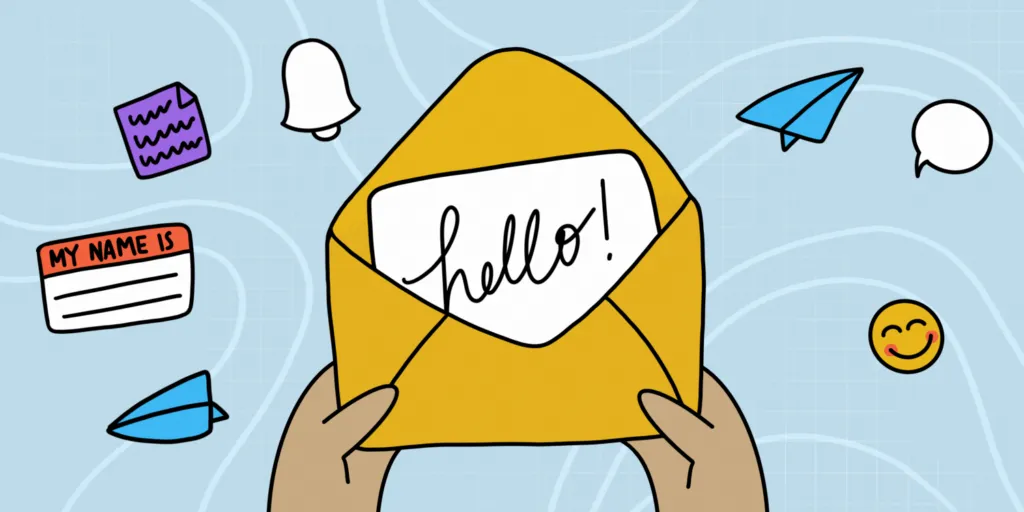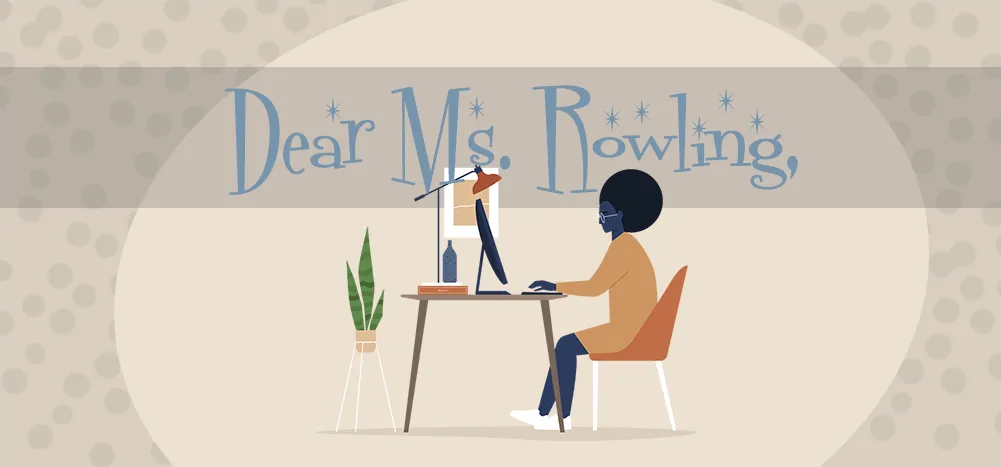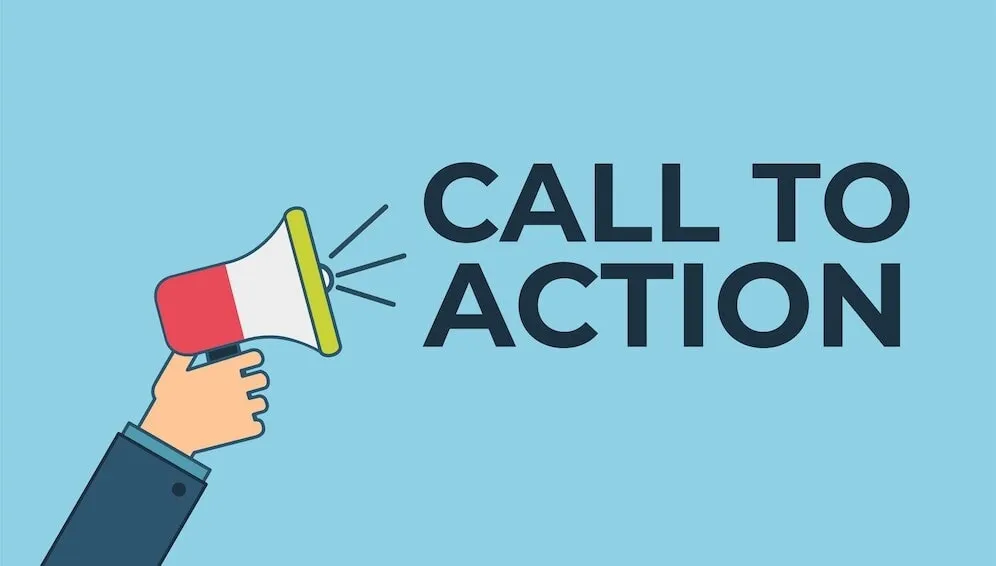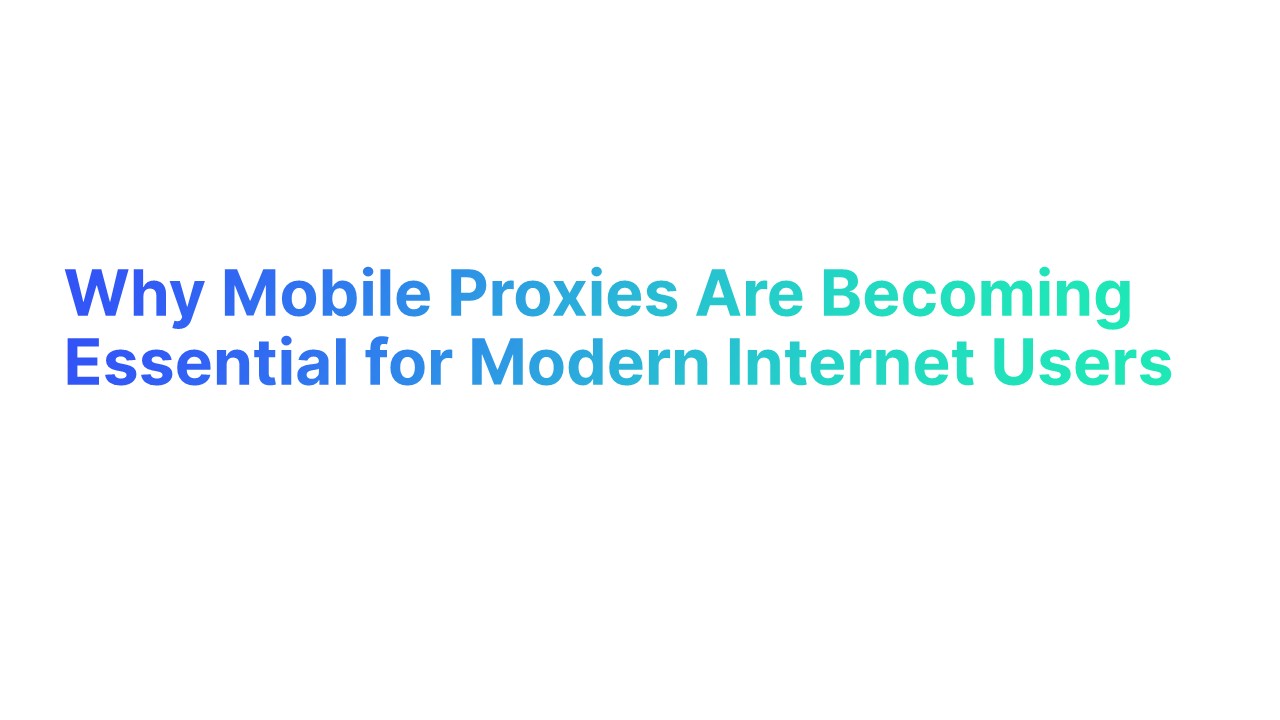What is an Introduction Email?

An introduction email is a message sent to introduce yourself, your company, or a new service to someone. This type of introductory email is often used in business to make new connections, start conversations, or present opportunities.
An introductory email or introduction can take various forms, such as sales introductions, customer introductions, self-introductions at a new job, or introducing a new employee to a team.
A good introduction email sets a positive impression and encourages the recipient to engage. Introduction emails help build professional relationships. They are crucial for networking, business growth, and career opportunities.
For instance, when a new employee joins a company, they send a cold email or an introduction email to their team. This cold emails helps in establishing connections and starting collaborations.
A HubSpot study found that personalized emails boost click-through rates by 14% and conversion rates by 10%. This highlights the significance of tailoring your introduction emails.
Key Elements of an Effective Introduction Email
Compelling Subject Line: This is the first thing the recipient sees. Make it interesting and clear. For example, "Introducing Our New Sales Manager" grabs attention.
Opening Line: Start with a friendly greeting. Mentioning a mutual connection can make it more personal. For instance, "Hi, I'm John, and I was referred by Jane Doe."
Brief Description: Keep it short. Explain who you are and why you are writing. For example, "I am the new account manager at ABC Corp, and I would love to discuss potential collaborations."
Company Name and Job Title: Clearly state your job position and company to establish credibility. "I work at XYZ Inc. as a business development executive."
Key Benefits: Highlight what the recipient gains. "We offer innovative solutions that can save you 20% on costs."
Call to Action: Encourage the recipient's time to respond. "Can we schedule a quick call next week?"
Sign Off: Use a friendly yet professional closing. "Best regards, John Doe."
Types of Introduction Email Templates
1. Self Introduction Emails

Professional self- introduction email templates and sample emails are used when you need to introduce yourself to someone new. Whether you are starting a new job or connecting with a potential client, a self introduction email can set a more casual tone for your relationship.
Key Elements:
- Compelling Subject Line: A clear and interesting subject line grabs attention. For example, “Hello from Your New Account Manager” is inviting.
- Opening Line: Start with a friendly greeting. Mentioning a mutual connection can make it more personal. For instance, “Hi, I’m [Your Name], and I was referred by [Mutual Contact].”
- Brief Description: Keep it short. Explain who you are and why you are writing. “I recently joined [Company Name] as the new [Job Title].”
- Company Name and Job Title: Clearly state your position and company to establish credibility. “I work at [Company Name] as a [Job Title].”
- Sign Off: Use a friendly yet professional closing. “Best regards, [Your Name].”
Self introduction emails are perfect for establishing connections and starting professional relationships. They help create a positive first impression with new contact and open the door for future interactions.
2. Business Introduction Emails

Business introduction emails are used to introduce your company or a new service to potential clients or partners. These emails are crucial for business growth and networking.
Crafting a professional introduction email is essential for establishing the beginnings of a mutually beneficial, long-term business relationship and collective success.
Key Elements:
- Compelling Subject Line: Make it interesting and clear. “Introducing [Your Company Name]” grabs attention.
- Opening Line: Start with a friendly greeting. Mentioning a mutual connection can make it more personal. “Dear [Recipient’s Name], I hope this email finds you well.”
- Brief Description: Explain who you are and why you are writing. “My name is [Your Name], and I am the [Job Title] at [Company Name].”
- Company Name and Job Title: Clearly state your position and company to establish credibility. “We specialize in [brief description of what your company does].”
- Key Benefits: Highlight what the recipient gains. “I believe our services can benefit your company.”
- Call to Action: Encourage the recipient to respond. “Can we schedule a quick call next week to discuss this further?”
- Sign Off: Use a friendly yet professional closing. “Best regards, [Your Name], [Company Name].”
Business introduction emails are effective for creating new business opportunities and fostering professional relationships. They help in showcasing your company’s strengths and how you can add value to the recipient’s business.
3. Sales Introduction Emails

Sales introduction email templates are used to reach out to potential clients with the aim of selling a product or service. These emails should be persuasive and highlight the key benefits.
Key Elements:
- Compelling Subject Line: Grab attention with a benefit. “Save 20% on Your Next Purchase with [Your Company].”
- Opening Line: Start with a friendly greeting. “Hi [Recipient’s Name], I’m [Your Name], the [Job Title] at [Company Name].”
- Brief Description: Explain who you are and what you offer. “We offer innovative solutions that can help your company save 20% on costs.”
- Key Benefits: Highlight the recipient’s gains. “I would love to discuss how our services can benefit your business.”
- Call to Action: Encourage a response. “Can we schedule a quick call next week?”
- Sign Off: Use a friendly yet professional closing. “Best regards, [Your Name].”
Sales introduction emails are designed to persuade and generate interest in your products or services.
4. Warm Introduction Emails

Warm introduction emails are sent when you have a genuine interest and mutual connection with the recipient. Mentioning this genuine interest and connection can make the email more personal and effective.
Key Elements:
- Compelling Subject Line: Mention the mutual contact. "Recommended by [Mutual Contact]."
- Opening Line: Start with a friendly greeting. "Hi [Recipient’s Name], I’m [Your Name], and I was referred to you by [Mutual Contact]."
- Brief Description: Explain who you are and what you do. "I am the [Job Title] at [Company Name]. We specialize in [brief description of what your company does]."
- Mutual Connection: Highlight the mutual contact. "I believe we can collaborate on [specific project or need]."
- Call to Action: Encourage a response. "Can we schedule a brief call to discuss this further?"
- Sign Off: Use a friendly yet professional closing. "Best regards, [Your Name]."
Warm introduction emails leverage existing relationships to build new connections and opportunities.
15 Examples of Introduction Email Templates

Here are 15 examples of email introduction templates that you can use to make a positive impression.
1. Cold Sales Introduction Email Template
2. Warm Introduction Email Template
3. Business Introduction Email Template
4. Self Introduction Email Template
5. Networking Introduction Email Template
6. Job-Related Introduction Email Template
7. Event-Triggered Introduction Email Template
8. Referral Introduction Email Template
9. Company Introduction Email Template
10. Sales Introduction Email Template
11. New Employee Introduction Email Template
12. Self Introduction Email Templates for Various Scenarios
Introduction to a Potential Client
Introduction via Mutual Connection
13. Freelance Writer Introduction Email Template
14. Follow Up Introduction Email Template
15. Formal Introduction Email Template
Special Considerations In Introduction Emails for Different Scenarios
Crafting the perfect business introduction email and template varies depending on the scenario. Here are some tips for different situations to help you create effective and engaging emails
Introducing New Team Members

When new team members join, it’s important to introduce them to the rest of the team professionally. This helps everyone get to know the new person and understand their role.
Example: “Hi Team,
I am excited to introduce our new team member, [New Team Member’s Name]. [He/She] will be joining us as [Job Title]. [New Team Member’s Name] has [brief background or experience], including valuable experience from their previous company, and will be a great addition to our team. Please join me in welcoming [New Team Member’s Name].
Best regards, [Your Name]”
Tips:
- Keep the email friendly and welcoming.
- Include the new team member’s job title and a brief background.
- Encourage the team to welcome the new members.
Following Up After an Initial Meeting

Following a follow up email after an initial meeting helps to keep the conversation going and shows that you are interested in building a professional relationship.
Example: "Hi [Recipient’s Name],
It was great meeting you at [event/meeting]. I enjoyed our conversation about [specific topic]. I would love to discuss further how we can work together on [specific project or collaboration]. Please let me know your availability for a quick call.
Kind regards,
[Your Name]"
Tips:
- Mention the event or meeting where you met.
- Refer to a specific topic you discussed.
- Suggest a follow-up call or meeting to continue the conversation.
Nurturing Existing Relationships and Professional Contacts
Maintaining relationships with existing and relevant industry contacts is crucial for ongoing collaboration and networking.
Example: "Hi [Recipient’s Name],
I hope this email finds you well. It has been a while since we last connected, and I wanted to touch base and see how things are going at [Recipient's Company]. I would love to catch up and discuss any new opportunities for potential collaboration together. Please let me know when you are available for a brief call.
Best regards,
[Your Name]"
Tips:
- Start with a friendly greeting and inquire about the recipient’s well-being.
- Mention the last time you connected and express interest in catching up.
- Suggest a call to discuss new opportunities.
Practical Tips:
- Use Simple Language: Avoid jargon and complex words. Keep your sentences short and easy to understand.
- Be Personal: Use the recipient’s name and refer to specific details from your interactions.
- Be Clear and Direct: State your purpose clearly and suggest the next steps.
- Use a Friendly Tone: Make your email sound warm and inviting.
How To Craft the Perfect Subject Lines for Introductory Emails

Creating the perfect subject line for your introduction email is key to grabbing attention. Here are some easy steps to help you craft effective subject lines.
1. Keep It Short and Sweet
Keep your subject line short as they are more easier to read. Aim for under 50 characters. This way, your subject line won’t get cut off, especially on mobile devices. A short, clear subject line gets straight to the point.
Examples:
- "Meet Your New Team Member"
- "Introduction from [Your Company]"
2. Make It Personal
Use the recipient's name if you can. Personalization makes your email stand out. It shows that the email is specifically for them, not just anyone.
Example:
- "Hello [Recipient’s Name], Meet Your New Account Manager"
3. Be Clear and Direct
Tell the reader what the email is about. Don’t use vague or mysterious language. Clear subject lines get more opens because people know what to expect.
Examples:
- "Introducing Our New Sales Manager"
- "Your Introduction to [Your Company]"
4. Highlight a Benefit
Let the reader know what they will gain from opening the email. This could be a new business opportunity or, a benefit, or an important update.
Examples:
- "Improve Your Sales with Our New Tool"
- "Exciting Collaboration Opportunity"
5. Use Action Words
Encourage the reader to take action. Use verbs like “meet,” “discover,” or “join.” Action words create a sense of urgency and interest.
Examples:
- "Join Us for a Brief Call"
- "Discover Our New Services"
6. Ask a Question
Questions spark curiosity. They make the reader want to open the email to find the answer.
Examples:
- "Ready to Boost Your Sales?"
- "Want to Meet Our New Team Member?"
7. Avoid Spammy Words
Words like “free,” “urgent,” or “act now” can make your email look like spam. Avoid using too many exclamation points or all caps.
8. Test Different Subject Lines
Try different subject lines to see which works best. A/B testing can show you which subject line gets more opens and clicks.
Example: Send half your emails with the subject line "Meet Your New Team Member" and the other half with "Introducing [New Employee] from [Your Company]." Compare the results to see which performs better.
How to Write the Opening Line for Introductory Emails

Creating an effective opening line for your introduction email template is essential to engage your reader from the start. Here’s a simple guide to help you write a compelling opening line for email templates.
1. Be Friendly and Polite
Start with a friendly greeting. Use the recipient’s name to make it personal.
Example: "Hi [Recipient’s Name], I hope you are well."
2. Mention a Common Connection or Interest
If you have a mutual contact or share a common interest, mention it. This builds a connection right away.
Example: "Hi [Recipient’s Name], I was referred to you by [Mutual Contact’s Name]."
3. State the Purpose Clearly
Let the reader know why you are writing. Make the purpose of your email concise enough.
Example: "I’m reaching out to dear team to introduce myself as your new account manager."
4. Highlight a Benefit
Explain what the recipient will gain by reading your email. Mention a benefit or a solution to a problem.
Example: "I wanted to share how our new service can help improve your sales."
5. Ask an Engaging Question
Questions can pique curiosity and encourage the reader to continue.
Example: "Have you ever wondered how to streamline your workflow?"
6. Keep It Short and Simple
Avoid long sentences. Keep your opening line short and to the point.
Example: "I’m excited to introduce you to our latest product."
How To Write A Perfect Body of the Email

Creating an effective introduction email template requires a well-structured body. Here’s a simple guide to help you write a compelling, professional introduction email sample body.
Describe Yourself and Your Purpose In Brief
Start by introducing yourself and explaining the purpose of your email. Briefly describe your skills and current postion. Keep it short and simple.
Example: "Hi [Recipient’s Name], I am [Your Name], a sales manager at [Your Company]. I am reaching out to introduce our new product that can help improve your sales."
- Mention your job title to give context.
- State why you are writing the email.
- Be clear and direct.
Highlight Key Benefits and Pain Points
Next, focus on the benefits your recipient will gain and the other pain point your product or service addresses.
Example: "Our new product offers several benefits:
- Increased Efficiency: Helps you manage tasks faster.
- Cost Savings: Reduces your expenses by 20%.
- Easy to Use: Simple interface for all users.
We understand that managing sales can be tough. Our product aims to make this process easier and more efficient for you."
- Use bullet points for clarity.
- Highlight key benefits clearly.
- Address common pain points in your recipient's industry.
Tailor the Message to the Recipient’s Industry
Customize your message based on the recipient’s industry. This shows that you understand their specific needs and challenges.
Example: "As a company in the tech industry, staying ahead of trends is crucial. Our product is designed to keep your processes up-to-date and efficient, helping you stay competitive."
- Mention the recipient's industry.
- Relate your product’s benefits to their specific needs.
- Show understanding of their industry challenges.
How To Craft a Strong Call to Action
Creating a strong call to action (CTA) in your introduction or email marketing template is essential. A good CTA guides your reader on what to do next. Here’s a simple guide to help you craft a compelling CTA.

1. Be Clear and Direct
Your CTA should tell the reader exactly what to do. Use simple and direct language.
Examples:
- "Sign up now"
- "Get your free trial"
- "Schedule a call"
2. Use Action Words
Action words encourage the reader to take action. Start your CTA with verbs like "download," "join," or "discover."
Examples:
- "Download the guide"
- "Join our webinar"
- "Discover more"
3. Highlight Benefits
Show the reader what they will gain by following the CTA. Mention a benefit or solve a pain point.
Examples:
- "Sign up now to save 20%"
- "Get your free trial and see the difference"
- "Schedule a call to boost your sales"
4. Create Urgency
Creating a sense of urgency can make the reader act quickly. Use phrases like "limited time," "act now," or "only a few spots left."
Examples:
- "Sign up now, limited time offer"
- "Get your free trial today"
- "Schedule a call, only a few spots left"
5. Keep It Short
Your CTA should be brief and to the point. Long CTAs can be confusing and less effective.
Examples:
- "Join now"
- "Start free trial"
- "Get started"
Encourage a Quick Call or Follow Up
Asking for a quick call or follow up email meeting is a great way to engage your reader. It shows that you are interested in a real conversation.
Example: "Would you like to discuss this further? Let’s schedule a quick call to explore how we can help you."
Tips:
- Be direct and polite.
- Keep it short and clear.
- Mention the benefit of the call.
Storytelling: Think about a time you had a great meeting with someone new. How did that help you? Sharing a story can make your CTA more relatable.
Data-Driven: "According to our data, a quick call can help clarify any questions you might have. Let’s find a time that works for you."
Step-by-Step Guidance:
- Introduce the idea of a call.
- Explain why it’s beneficial.
- Provide a way to schedule it.
Incorporate Calendar Links for Scheduling
Including a calendar link in your introduction email template makes it easy for the reader to schedule a call. This reduces back-and-forth emails and saves time.
Example: "Click here to schedule a call at your convenience: [Calendar Link]."
Tips:
- Make the link easy to find.
- Use a scheduling tool like Calendly.
- Offer a few time slots to choose from.
Direct Address: "You can schedule a call directly with me using this link: [Calendar Link]. I look forward to speaking with you!"
Use of Visuals: Include a button or graphic to make the calendar link stand out. This catches the reader’s eye and makes the action clear.
Examples of Strong CTAs
Example 1: "Join our webinar now and learn how to improve your sales. Limited spots available!"
Example 2: "Get your free trial today and see how our product can help you save time."
Example 3: "Download our guide and discover tips to boost your efficiency."
How To Sign Off Professionally
Ending your email with a professional sign-off is important. It leaves a positive impression and ensures that your reader knows how to contact you.

Craft a Professional Email Signature
A professional email signature is like a digital business card. It should provide your key details in a clear and concise manner.
Example: Best regards,
[Your Name]
[Your Job Title]
[Your Company Name]
[Email Address]
[Phone Number]
Tips:
Keep It Simple: Include only essential information.
Use Clear Formatting: Make sure your email signature is easy to read.
Consistency: Use the same email signature for all professional emails.
Storytelling: Think of your email signature as the final handshake in a meeting. It should be strong and memorable.
Data-Driven: Studies show that emails with professional signatures are taken more seriously and often get quicker responses.
Step-by-Step Guidance:
- Write your full name.
- Add your job title.
- Include your company name.
- Provide your contact information.
Include Contact Details and Social Media Links
Adding your professional contact details and social media links helps the recipient know how to reach you. It also shows that you are open to continuing the conversation on different platforms.
Example: Best regards,
[Your Name]
Sales Manager
[Your Company Name]
Email: [Your Email Address]
Phone: [Your Phone Number]
LinkedIn: [Your LinkedIn Profile]
Tips:
Be Accessible: Include multiple ways to contact you.
Professional Links Only: Use only work-related social media profiles.
Easy to Click: Make sure links are clickable.
Direct Address: "You can reach me via email or connect with me on LinkedIn."
Use of Visuals: Consider adding icons for each social media platform to make the links more visually appealing.
Best Regards vs. Kind Regards: Choosing the Right Sign Off
When choosing a sign-off, it's important to consider the level of formality and the existing relationship you have with the recipient.
1. Best Regards
Formality: Moderately formal
Usage: Common in professional settings
Tone: Polite and professional
Impression: Shows respect and professionalism
Example: "Best regards, [Your Name]"
Best For: Formal business communication
2. Kind Regards
Formality: Slightly less formal
Usage: Suitable for both professional and semi-formal settings
Tone: Friendly and warm
Impression: Shows friendliness and approachability
Example: "Kind regards, [Your Name]"
Best For: Friendly business communication
Conclusion
Crafting effective introduction emails is essential for building professional relationships. These emails help you connect with potential clients, partners, and colleagues.
Using the right introduction email template can make a big difference. Personalize your emails to the prospect's company to make them more engaging. Mention any mutual connections or specific benefits to the recipient.
Different types of business introduction email templates serve various purposes. Keep your language simple and direct, and always focus on the recipient's needs and benefits. Also, always include a friendly sign-off with your contact details.
With practice, you'll find that writing effective introduction emails becomes second nature, helping you grow your network and achieve your business goals.








